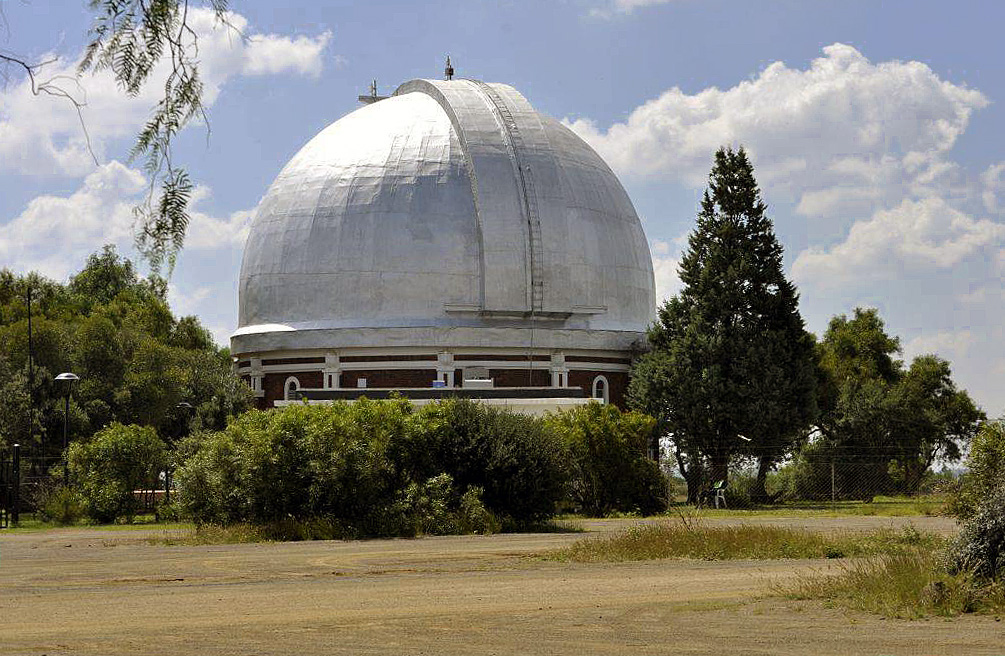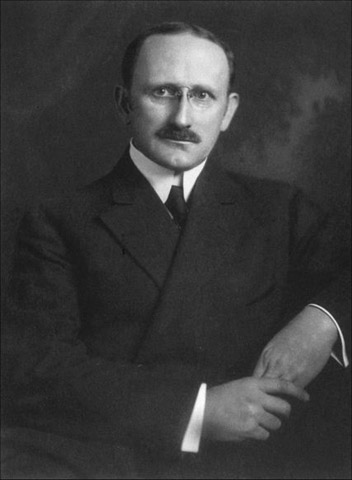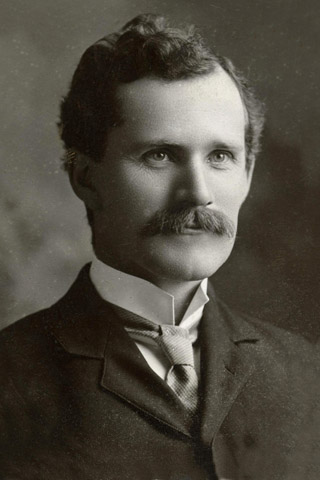|
About the
Lamont-Hussey Observatory
The Lamont–Hussey Observatory (LHO) was a southern hemisphere astronomical
observatory owned and operated by the University of Michigan (UM). It
housed a 27-inch refractor, then the largest telescope south of the
equator. Located in the city of
Bloemfontein,
Free State, South Africa, construction began in 1927 and was completed
in 1928. The facility was closed in 1972. When it was first in
operation it was one of three observatories in Africa (the other two were
run by Yale and Harvard Universities).
.
History
from:
https://en.wikipedia.org/wiki/Lamont–Hussey_Observatory
.The observatory was
a joint project of an industrialist
Robert P. Lamont and University of Michigan astronomer
William J. Hussey. The two men shared a room while attending UM, and
were friends from that time. In 1923, Hussey visited South Africa
and selected Naval Hill in Bloemfontein as the site for the observatory.
In 1926, Hussey and another UM professor,
R. A. Rossiter, left Michigan for the observatory site. During a
stopover in London, Hussey died suddenly, but Rossiter continued the
journey, and oversaw construction of the observatory for the next two
years. He became the director of the LHO when it opened, and remained
there until retiring in 1952. The facility was largely unused from when
Rossiter retired until 1963, when it was officially re-opened by Frank
Holden. In its last few years, the main task performed was a
re-examination of binary stars. It was closed in 1972, and two years
later the building was given to the Performing Arts Council of Free State
in Bloemfontein, which turned it into the Observatory Theatre, also known
as the Sterrewag Theatre.
The telescope
The LHO's primary instrument was a 27-inch (0.69 m) refracting telescope
for its entire span of operations. The lens blanks were made by
Carl Zeiss Jena in 1923. They were then figured by James B.
McDowell and Frederick Hageman of
John A. Brashear, Co.. The finished lenses were assembled into a
telescope
great refractor by the Detroit Observatory's machine shop. The device
was tested in Michigan and then shipped to South Africa, where it was
installed and began operating in 1928. In 1974, after closure of the
observatory, the telescope was dismantled and the lenses were shipped back
to Michigan. The tube and other parts remained in South Africa, and are on
display at the Erlich Park Fire Station Museum.
Naval Hill
Planetarium
After closure of LHO in 1974 the building was donated to the Performing
Arts Council of the Free State and used for many years as a theater.
Recently, a partnership converted the facility to a planetarium, building
a dome within a dome to house a 12-meter seamless aluminum screen. The new
Naval Hill Planetarium had its formal dedication on November 1, 2013.
Astronomy Research Professor Patrick Seitzer spoke on behalf of the
University of Michigan.
|
|
The
planetarium, situated at the old University of Michigan Lamont-Hussey
Observatory Building on Naval Hill, has been established by the University
of the Free State with the support of founding partners – the Department
of Science and Technology, the Free State Department of Economic
Development, Tourism and Environmental Affairs and the Mangaung Metro
Municipality. It will be the first component of a proposed Centre for
Earth and Space at the site, which will be a multi-purpose facility
hosting the digital planetarium, an environmental education centre and a
science and arts garden. It will be a multi-disciplinary science
communication and education centre. |




